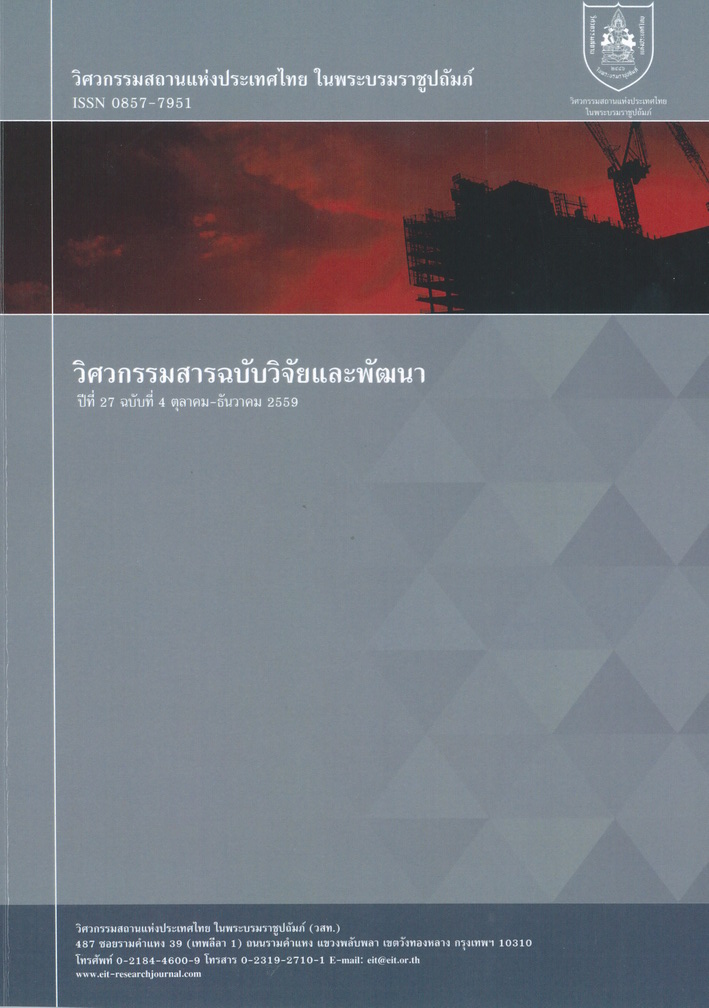PREDICTION OF TIME-DEPENDENT STRENGTHS OF SALT PILLARS USING STRAIN ENERGY PRINCIPLE
Main Article Content
Abstract
The objective of this study is to determine the long-term strengths of pillars in salt mines in the northeast of Thailand. One of the design requirements is that the pillars must remain mechanically stable up to the time of backfill installation (a minimum of 2-3 years). Strain rate-controlled uniaxial and triaxial compression tests have been performed on salt specimens. The confining pressures are maintained constant ranging from 0, 3, 7 to 12 MPa. The applied strain rates are varied from 10-7 to 10-4 s-1. The axial stresses and lateral strains are monitored through the strain-softening region for up to 21 days. The results indicate that the strengths and elastic moduli increase exponentially with the applied strain rates. The potential law parameters are calibrated with the test results, and hence allows constructing series of strain-time curves for the pillars subjected to vertical stresses under different depths and extraction ratios. To consider both stress and strain, the strain energy density principle is applied to develop strength criterion for the salt pillars. It is found that the distortional strain energy at dilation and at failure varies linearly with the mean stress (). Combining this criterion with the series of the strain-time curves the time-dependent strengths of the salt pillars can be predicted.
Article Details
The published articles are copyright of the Engineering Journal of Research and Development, The Engineering Institute of Thailand Under H.M. The King's Patronage (EIT).


